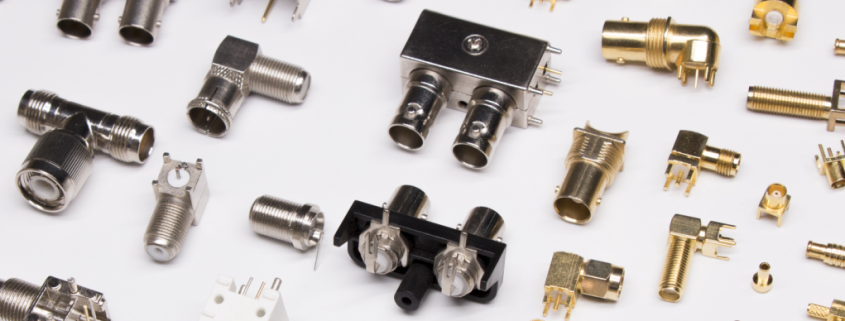Many professionals may lack a comprehensive understanding of the differences between 3.5mm, 2.92mm, 2.4mm and SMA connector. Today, we would like to share our knowledge about these four connectors with you and hope that it will help you. Many users have a common question: which of these connectors can be seamlessly connected to SMA? To answer this question, we must first distinguish between these connectors.
SMA Connector
First, let’s discuss SMA connectors, which are designed for 0.141 semi-rigid coaxial cable and are typically filled with PTFE (polytetrafluoroethylene) dielectric material. Because of their small size and high frequency, they are often used as precision connectors in microwave applications, especially in the industry. Semi-rigid cables with SMA connectors have a frequency range of DC to 18 GHz, while flexible cables have a frequency range of DC to 12.4 GHz. SMA connectors have rapidly gained in popularity, and even later millimeter-wave connectors (such as 3.5 mm and 2.92 mm) were developed with their mechanical compatibility in mind.

3.5 mm Connector
Let’s take a closer look at the characteristics of 3.5 mm connectors. These connectors have an outer diameter of 3.5 mm, an impedance of 50 Ω, and a binding mechanism that uses a 1/4-36UNS-2 inch threaded connector.The major difference between the SMA and 3.5 mm connectors is that the 3.5 mm connectors use air as the dielectric. Their outer conductor is thicker and mechanically stronger than SMA connectors. Additionally, 3.5 mm connectors offer excellent electrical performance, mechanical durability, and repeatability, making them suitable for use in the testing industry.
2.92 mm Connector
Now let’s look at the 2.92 mm connectors. These connectors have an outside diameter of 2.92 mm, an impedance of 50 Ω, and use a 1/4-36UNS-2 inch threaded coaxial connector to make the connection. 2.92 mm connectors are similar in construction to the 3.5 mm connectors, but are smaller in size. They are available in a frequency range from DC to 46 GHz and offer excellent electrical performance. Importantly, 2.92 mm connectors are compatible with SMA and 3.5 mm connectors, making them widely accepted by manufacturers and a popular choice for millimeter wave applications worldwide.
2.4 mm Connector
Finally, let’s take a look at the 2.4 mm connector with a 2.4 mm OD and 50 Ω impedence and the 1.85 mm connector with a 1.85 mm OD and 50 Ω impedence. These connectors have smaller internal dimensions and operate at higher frequencies, up to 50GHz and even 60GHz nominal.
It should be noted that the 2.4 mm and 1.85 mm connectors are mechanically compatible with each other, but cannot be connected to 2.92 mm, 3.5 mm or SMA connectors. Attempting such connections will result in damage to the connector.
After reading this article, you should have a solid understanding of the differences between 3.5mm, 2.92mm, 2.4mm, and SMA connectors. Additionally, if you would like more information about these connectors, please feel free to contact us.


Your website has outstanding content. I bookmarked the site
I discovered your site from Google and also I need to state it was a wonderful locate.
Thanks!
Hi, I hope you are well. I really took pleasure in reading this blog.
I anticipate your next post.
Loved how you made this subject so available. Maintain the great work!